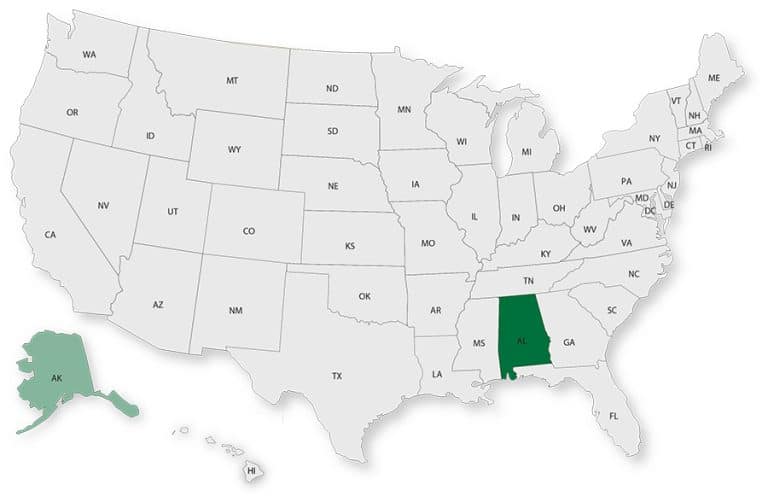Word on the street > AE Industry Intelligence: Issue 92
AE Industry Intelligence: Issue 92

In This Issue
I Really Miss My Buggy Whip Do You Sound Like Quint? 50 in 50
I Really Miss My Buggy Whip
Said no one ever. The Model T spelled the end for the horse-drawn buggy, and with it, the thriving buggy-whip making industry (#endbigbuggywhip). When something new and better comes along (hello, internet; goodbye, newspapers), the old ways of doing things go the way of the dodo.
There’s been a lot of change in how business and work get done in the AE industry over the past three years. And in some ways, what was “normal” three years ago is barely relevant today. Here are some things that you do NOT hear AE firm employees, managers, and owners say today.
- I really miss my two-hour commute: The days of AE industry employees—especially those in major metro areas—commuting for an hour (or more!) in both directions to “get to work” are gone. Whether it’s a full- or partial-remote model, employees are converting those 10-plus hours a week into either (a) more work (surprisingly) or (b) literally anything except commuting.
- I really miss my cube: Variety is the spice of life. Turns out for a whole bunch of AE professionals, it’s the preferred work model too. Designers, planners, and scientists are ditching their 6’ x 6’ drab cubes and signing in from Starbucks, calling in from Cabo, and Teamsing with a virtual or blurred background from wherever they darn well please. Many AE firms are not only happy to offer their employees this flexibility but are actively encouraging them to use it with a view to a happier, more productive, more loyal workforce.
- I really miss writing down dial-in numbers for conference calls: Remember them? First you dialed the 800 number. Then the loooooong series of numbers to access the call (that you always surprised yourself when you entered them correctly) followed by (as the woman with the Canadian accent said) “the pound or hashtag button.” Now it’s all one-click Zoom and Teams and you’re in. (Thank you, mystery CEO, for this one.)
- I really miss weekly business travel: Snowstorms. Delayed flights. Rushing to the airport. Lousy overpriced sandwiches at the concourse Wolfgang Puck On The Go. Stuck overnight at the airport Marriott. Wondering how a hotel can get away with calling a single 20-year-old treadmill with a broken TV monitor a “fitness center.” Missing your kid’s piano recital or hockey game (or just plain missing your kids). Middle seats. Kids kicking the back of your seat. Passengers sneezing all around you. Hearing the “mind your elbows” only after the drinks cart had skinned your elbow. Yup, you don’t hear too many former road warriors say they miss business travel. They may miss spending their business development expense accounts, but they don’t miss the relentless beating their bodies took pre-pandemic. Nor the dry- cleaning bills. As one CEO expressed it: “I’d like to travel a little more, but nowhere near as much as I was doing pre-pandemic.”
- I really miss spending 6% to 8% of hard-won revenues on rent: With revenues doubling (or more!) for many firms over the past three years at the same time that office footprints have been shrinking, along with securing better (cheaper!) lease terms, there’s not a CFO in the industry who isn’t feeling good about where things are now or who would want to go back in time.
- I really miss single-digit profits: Lower real estate expenses + minimal internal travel expenses + unabated record demand for services = double-digit profits = record stock values and bonuses. No principal misses the days of scrambling to hit 10% pre-tax, pre-bonus profit and worrying if they can do it again next year.
- I really miss cutting fees to win work: There’s zero excess capacity in the system and overwhelming demand for AE and environmental services from coast to coast. Every firm is pushing fees up—subtly, professionally, politely, with great deference—however you want to describe it. But, with backlogs at record highs, no firm has to acquiesce to unreasonable client demands for lower fees.
The upshot: A new cadence is emerging for how business gets done in the AE industry. Much of what was “standard operating procedure” prior to the pandemic will remain—but will be more refined going forward. However, the industry will also shed a lot of wasteful, sub-optimal practices that you will hear nobody say, “I really miss…”
Congratulations to our client WATERMARK Engineering Group (Sun City Center, FL): This week this integrated water resources firm announced their acquisition by Plummer (Fort Worth, TX) (ENR #458), an industry-leading water engineering firm. The acquisition continues Plummer’s growth in Florida and the Southeast.
Speaking of the Southeast…: Due to overwhelming demand, registration for the Southeast States M&A Symposium is now closed. We have opened a waitlist should space become available.
M&A up 41% year-over-year: This week saw the announcement of 16 transactions of AE and environmental firms in the U.S.
If you’re thinking there seems to be a lot of deals this year, you’re correct! Here are the 11 transactions announced since the beginning of the year that Morrissey Goodale’s M&A team helped make happen. If you’re interested in M&A—either acquiring a firm or selling your firm—then email Principal Nick Belitz at [email protected] to see how we can assist you achieve your goals.
2021 recap: Get the stats and view the important trends in our 2021 AE M&A Year-in-Review Infographic here. Morrissey Goodale Vice President Jon Escobar provides his commentary on industry M&A last year and what lies ahead here.
Note: There will be no Word on the Street next Monday in observation of Presidents Day.
Questions? Insights? What do you really not miss about the way you used to do business? Email Mick Morrissey at [email protected] or call him at 508.380.1868.
Do You Sound Like Quint?
If you just finished up Mick Morrissey’s article, you read all about what we are not hearing from our clients. But here is one thing we are hearing—over and over again. It sounds something like this: “Our young employees want to be vice presidents two months into the job, but they don’t want to put the work in!”
When I have these conversations with principals of AE firms (seemingly a daily occurrence), I feel like I’m talking with Quint from the movie, Jaws—“Can’t get a good man these days under 60! You have city hands, Mr. Hooper. You’ve been countin’ money all your life.”
Do you sound like Quint?
If you sound like Quint, think about your firm’s culture and the role it’s playing in the level of engagement you observe in your young employees. To gauge whether your organization is part of the solution or part of the problem, reflect on these questions:
Accepted Norms and Behaviors
• Is healthy debate commonplace?
• Is continuously challenging the status quo invited or discouraged?
• Are displays of positive reinforcement in your firm more commonplace than public displays of dissatisfaction?
• Is non-performance addressed constructively and in real time?
• Is negativity stamped out?
• Do you have full participation at meetings? (*If not, make the meeting more valuable instead of blaming the employees.)
• Rapid response to internal clients— minutes vs. days (or not at all).
• Are the words “please” and “thank you” shared freely or are they thrown around like manhole covers?
Connectivity
• Are employees challenged to take on more?
• Are employees trusted to use their autonomy responsibly? (Are they given direction or directions?)
• Are employees plugged into firm-wide strategies and changes?
• Are there open lines of communication with internal support resources?
Urgency
• Is your organization serious about deadlines?
• Do employees routinely make and secure reliable commitments with both internal and external clients?
• Are employees invited and encouraged to experiment and brainstorm when the heat is on— resulting in group learning and innovation?
Support
• Do employees have access to guidance and expertise inside your firm?
• Do employees have up-to-date tools?
• Do employees have access to training and development opportunities?
• Is feedback, both positive and critical, given quickly and directly?
Total Wellness
• Do employees have fun at work and away from work?
• Do employees succeed at work and away from work?
If you can honestly answer in the affirmative to all of the above, then maybe you have a right to sound like Quint. Otherwise, reflect on what you and your company can do better to produce the level of engagement and the type of behaviors you seek in any and all generations of employee.
To learn more about how to engage all generations of employees, call Mark Goodale at 508.254.3914 or send an email to [email protected].
50 in 50: Alaska
50 states in 50 weeks: U.S. states economic and infrastructure highlights.

Key Economic Indicators
GDP: $50.2 billion
GDP 5-year growth rate (2017-2021): -1.9% (U.S: 1.6%)
GDP per capita: $68,462 (U.S.: $58,154)
Population: 733K
Population 5-year growth rate (2017-2021): -0.3% (U.S.: 0.5%)
Unemployment: 5.7% (U.S.: 3.9%)
Economic health ranking: #34 out of 50
Fiscal health ranking: #1 out of 50
Overall tax climate ranking: #3 out of 50
Key Sectors and Metro Areas
Top five industry sectors by 2021 GDP:
Top three industry sectors by GDP 5-year CAGR (2017-2021):
Top three metro areas by GDP:
- Anchorage
- Fairbanks
- Juneau
Top three areas by population 5-year CAGR (2016-2020):
- Ketchikan
- Anchorage
- Juneau
Infrastructure Highlights
Infrastructure: ASCE Infrastructure Grade (2020): C
Over the next five years, Alaska will receive over $5 billion from the Infrastructure Investment and Jobs Act (IIJA), which are likely going to help speed up the state’s relatively slow economic recovery. The Alaska Department of Labor is investing in programs to encourage careers in construction while state and local governments work to prioritize projects for the deployment of funds. The IIJA will make the following funds available over the next five years::
Construction spending (Value of Construction Put in Place – CPiP):
- Private Nonresidential CPiP: $272 million; 5.0% 5-year growth rate (2016-2020), above overall U.S. growth rate of 2%
- State & Local CPiP: $1.2 billion in 2020; -17.6% 5-year growth rate (2016-2020), below overall U.S. growth rate of 4.8%
AE Industry
ENR 500 firm headquarters (2021): 1
M&A activity since 2018:
- 5 deals with AK buyers
- 5 deals with AK sellers
Note: GDP calculations were revised to reflect Real (vs. nominal) GDP to adjust for inflation.
For customized market research, contact Rafael Barbosa at [email protected] or 972.266.4955. Connect with him on LinkedIn.
Subscribe to our Newsletters
Stay up-to-date in real-time.










